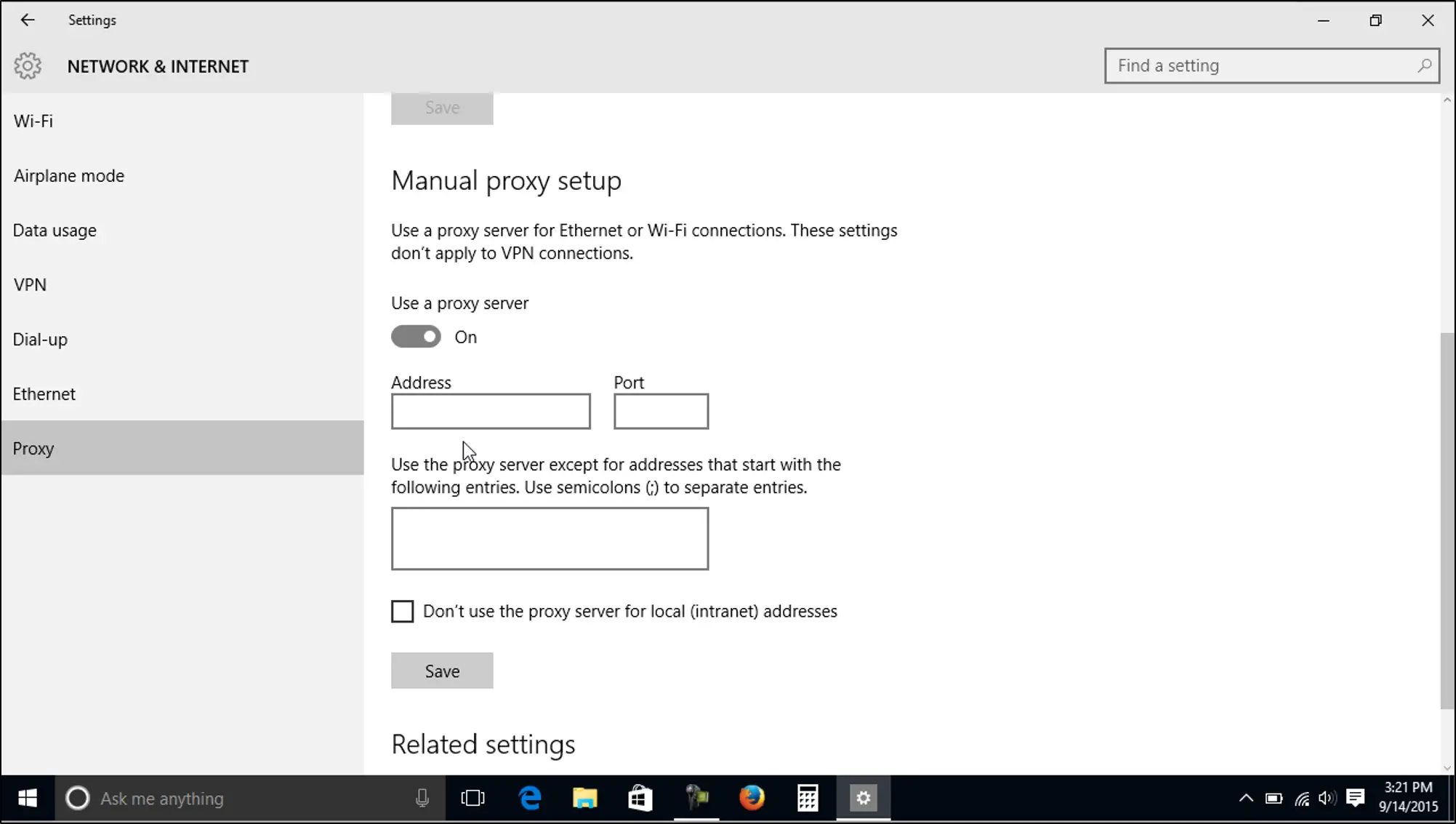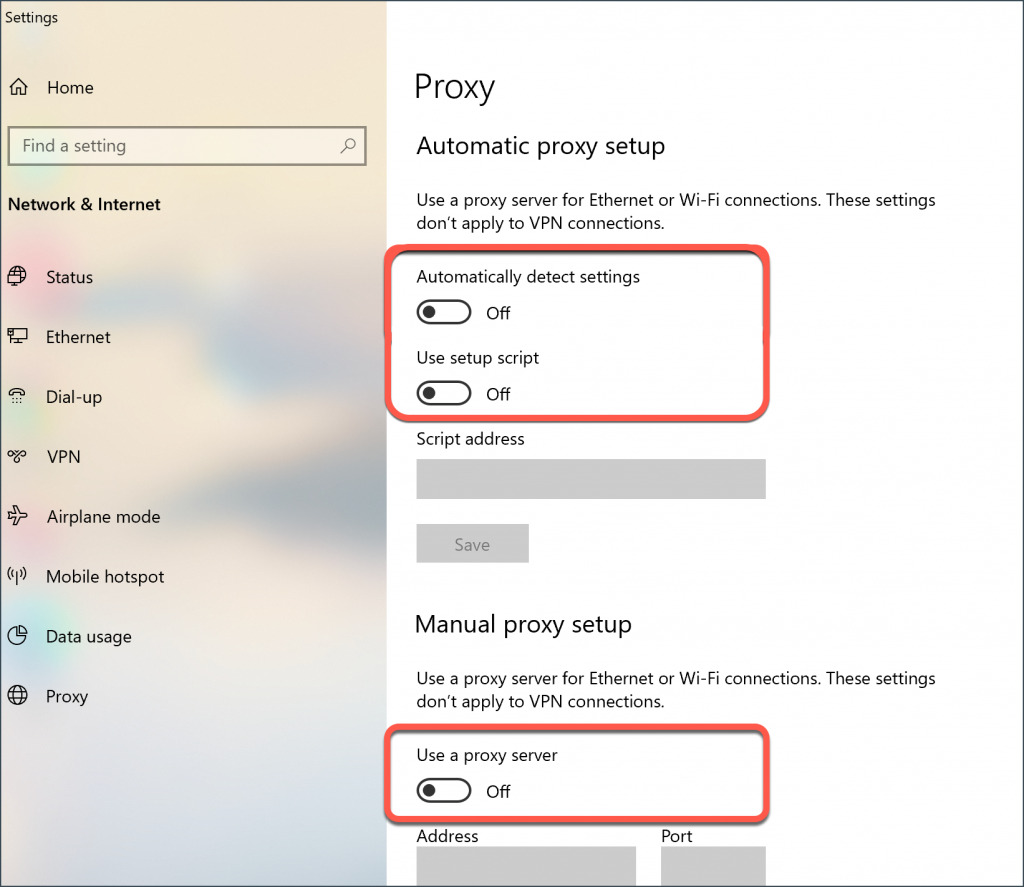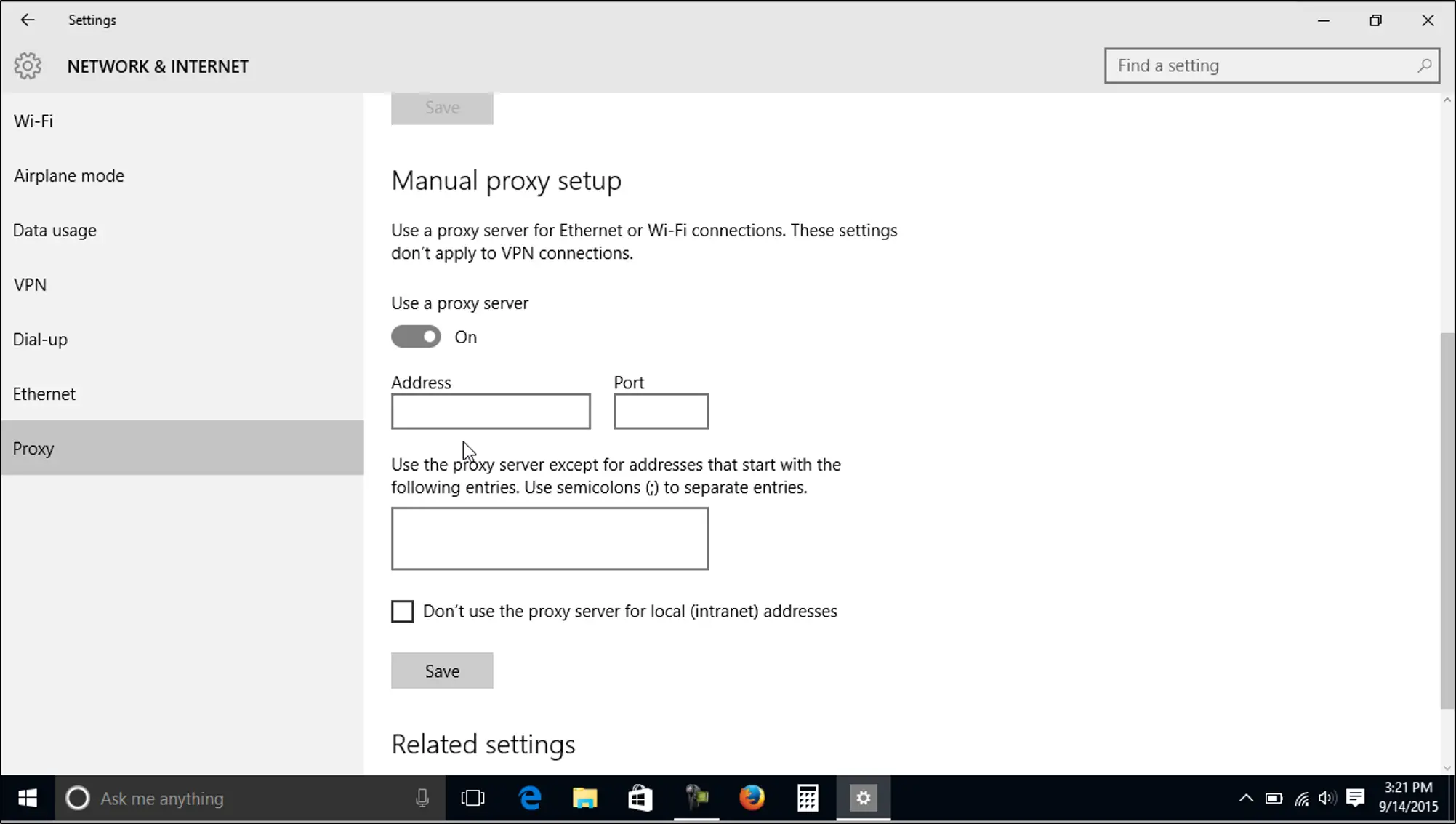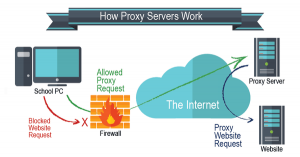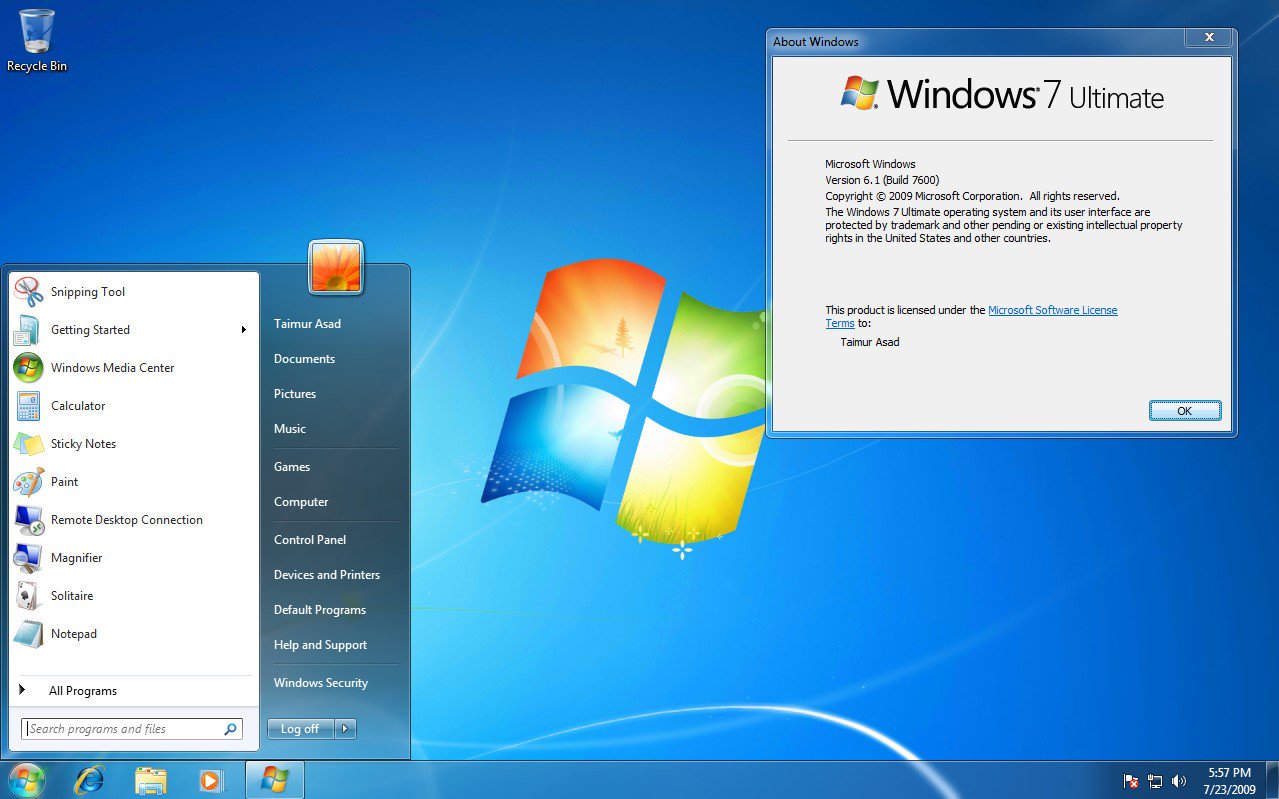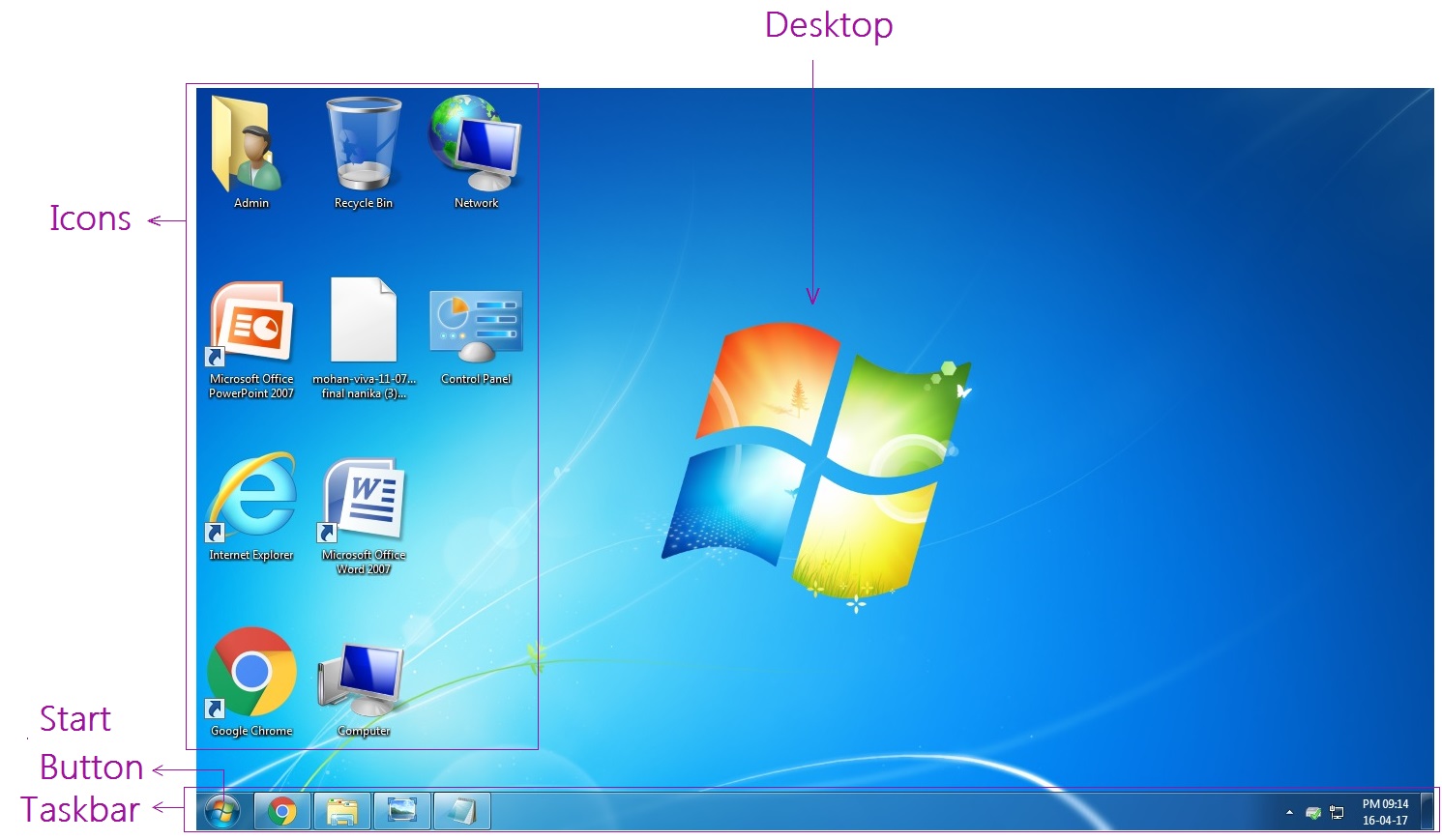Introduction
Welcome to this comprehensive guide on how to set up a proxy server on Windows 10. In today’s digital age, online privacy and security are of paramount importance. A proxy server acts as an intermediary between your device and the internet, providing an additional layer of protection and privacy while browsing the web.
Whether you are concerned about your personal information being exposed or you want to access region-restricted content, setting up a proxy server on your Windows 10 computer can help you achieve these goals. By routing your internet traffic through a proxy server, you can mask your IP address, encrypt your data, and bypass various online restrictions.
Configuring a proxy server on Windows 10 may seem daunting at first, but rest assured, it is a straightforward process that we will guide you through step by step. This guide is designed for users of all levels of technical expertise, from beginners to advanced users.
In the following sections, we will cover the benefits of using a proxy server, the necessary steps to configure it on your Windows 10 computer, and troubleshooting tips for common issues that may arise during the setup process. By the end of this guide, you will have a clear understanding of how to effectively set up and utilize a proxy server on Windows 10.
So, without further ado, let’s dive into the world of proxy servers and explore the numerous advantages they offer!
What is a Proxy Server?
A proxy server is an intermediary server that acts as a bridge between your device and the internet. When you access a website or any online resource, your request is first sent to the proxy server, which then forwards the request to the target website on your behalf. The response from the website is then sent back to the proxy server, which in turn delivers it to your device. This process ensures that your device’s IP address is hidden from the website you are visiting.
Proxy servers offer several functionalities and benefits. One of the primary purposes of using a proxy server is to enhance privacy and security. By masking your IP address, proxy servers help protect your personal information and browsing activities from being tracked by websites, advertisers, and other online entities. This is particularly useful if you are concerned about your online privacy or want to prevent unauthorized access to your data.
Another benefit of using a proxy server is the ability to bypass geographical restrictions. Some websites and online services are geo-restricted and can only be accessed from specific regions. By connecting to a proxy server located in the desired region, you can effectively bypass these restrictions and access content that would otherwise be unavailable.
In addition to privacy and bypassing restrictions, proxy servers can also provide caching capabilities. When you browse the web, certain files and resources are repeatedly requested, such as images or scripts. A proxy server can store these files in its cache, reducing the load on the target website’s server and improving overall performance. This can result in faster page load times and a smoother browsing experience.
Proxy servers can be categorized into different types based on their level of anonymity and functionality. Transparent proxies reveal your IP address to websites, whereas anonymous proxies hide your IP address but inform the target website that you are using a proxy. Finally, elite proxies provide the highest level of anonymity by not disclosing any information about your IP address or the fact that you are using a proxy.
Now that we have a clear understanding of what a proxy server is and its various benefits, it is time to explore how to set up a proxy server on a Windows 10 computer. In the following sections, we will walk you through the necessary steps and provide you with troubleshooting tips to ensure a smooth and successful setup process.
Benefits of Using a Proxy Server
Using a proxy server offers numerous advantages for individuals and businesses alike. Let’s explore some of the key benefits:
1. Enhanced Privacy and Security:
When you connect to the internet through a proxy server, your IP address is masked. This makes it difficult for websites and online entities to track your online activities and collect personal information. Proxy servers also provide an additional layer of encryption, which is especially beneficial when you are connected to public Wi-Fi networks or accessing sensitive information.
2. Bypass Geographical Restrictions:
Many websites and online services implement geographical restrictions that limit access based on your location. By using a proxy server located in the desired region, you can bypass these restrictions and access region-restricted content conveniently. This is particularly useful when trying to access streaming platforms, online gaming servers, or websites that are specific to certain regions.
3. Faster Browsing Speed:
A proxy server can cache frequently accessed web content, such as images and scripts. By storing these resources locally, subsequent requests for the same content can be fulfilled more quickly. This caching mechanism can significantly improve browsing speed and reduce bandwidth usage.
4. Load Balancing:
Proxy servers can distribute incoming requests across multiple servers, known as load balancing. This helps to evenly distribute the workload, optimize server performance, and prevent any single server from becoming overwhelmed with traffic. Load balancing can lead to improved website responsiveness and enhanced user experience.
5. Content Filtering:
In organizational settings, proxy servers can be used for content filtering. IT administrators can implement rules and restrictions to control what employees can access online. This feature allows businesses to block potentially harmful or inappropriate websites and protect their network infrastructure from security risks.
6. Anonymity:
Using an anonymous proxy server ensures that your identity is hidden while browsing the internet. This can be useful when you want to engage in activities that require a higher level of anonymity, such as whistleblowing, online activism, or accessing sensitive information without leaving digital traces.
These are just a few of the many benefits that come with using a proxy server. Now that you know why proxy servers are valuable, let’s move on to the practical steps of setting up a proxy server on your Windows 10 computer.
Before You Begin
Before diving into the process of setting up a proxy server on your Windows 10 computer, there are a few important considerations to keep in mind:
1. Understand Your Proxy Server Requirements:
Take some time to determine what specific requirements you have for setting up a proxy server. Consider factors like the level of anonymity you need, the desired location of the proxy server, and any specific features or functionalities you require. This will help you choose the right proxy server solution for your needs.
2. Choose a Reliable Proxy Server Provider:
There are several proxy server providers available in the market. Research and choose a reputable provider that offers reliable and secure proxy server options. Look for providers that have a good track record, positive user reviews, and excellent customer support. This will ensure a smooth and hassle-free experience as you set up and use the proxy server.
3. Verify Network Administrator Permissions:
If you are setting up a proxy server on a computer within a network environment, it is essential to check whether you have the necessary permissions and access rights. Depending on the network configuration, you may require administrative privileges or assistance from your network administrator to configure the proxy server settings.
4. Familiarize Yourself with Proxy Server Terminology:
Proxy servers come with their own set of terminologies and settings. Before proceeding, make sure you understand common terms like “Proxy IP Address,” “Proxy Port,” “Protocol,” and “Authentication.” This familiarity will help you navigate the proxy server setup process with confidence.
5. Choose Between Manual Configuration or Proxy Software:
When setting up a proxy server on Windows 10, there are two primary methods: manual configuration or using dedicated proxy software. The manual configuration method requires tweaking network settings, while proxy software offers a user-friendly interface and additional features. Determine which method suits your preferences and level of technical expertise.
By taking these steps before you begin, you will ensure a smoother proxy server setup process and avoid potential hiccups along the way. With these preparations in place, you are now ready to proceed with configuring the proxy server settings on your Windows 10 computer.
Step 1: Accessing Proxy Server Settings
The first step in setting up a proxy server on your Windows 10 computer is to access the proxy server settings. Follow these instructions to access the settings:
1. Open the Settings Menu:
Click on the “Start” menu and select the “Settings” gear icon. Alternatively, you can use the shortcut “Windows key + I” to open the Settings menu directly.
2. Open the Network & Internet Settings:
In the Settings menu, click on the “Network & Internet” option. This will open a new window with various network-related settings.
3. Navigate to the Proxy Settings:
In the left sidebar of the Network & Internet window, click on the “Proxy” option. This will display the proxy settings available for your Windows 10 computer.
4. Configure Automatically Detect Settings:
Under the “Automatic Proxy Setup” section, toggle the switch for “Automatically detect settings” to the “On” position. This option allows your computer to automatically detect and configure proxy server settings based on your network’s configuration.
5. Manually Add Proxy Server Settings:
If you have specific proxy server settings that you want to configure, scroll down to the “Manual Proxy Setup” section. Here, you can enter the proxy server address and the port number in the respective fields. You can also choose whether to use the proxy server for all protocols or only for specific protocols.
6. Save the Proxy Server Settings:
Once you have configured the proxy server settings, click on the “Save” button to apply the changes. Your Windows 10 computer will now use the specified proxy server for internet access.
Note: If you are using proxy software, the steps to access the proxy server settings may vary. Refer to the documentation provided by the proxy software or consult the support resources provided by your proxy server provider for detailed instructions on accessing and configuring the settings.
Now that you have accessed the proxy server settings on your Windows 10 computer, you are ready to proceed to the next step: configuring the proxy server settings. We will cover this in detail in the next section.
Step 2: Configuring Proxy Server Settings
After accessing the proxy server settings on your Windows 10 computer, the next step is to configure the specific details of the proxy server. Follow these steps to configure the proxy server settings:
1. Choose the Proxy Type:
If you are using a manual proxy configuration, you need to select the proxy type. You can choose between HTTP, HTTPS, SOCKS4, or SOCKS5, depending on your proxy server’s specifications. Consult your proxy server provider or documentation to determine the appropriate proxy type.
2. Enter the Proxy Server Address and Port:
In the manual proxy setup section, enter the proxy server address in the respective field. This is the URL or IP address of the proxy server you want to connect to. Then, enter the port number associated with the proxy server. The port number determines which specific service the proxy server is running or listening on.
3. Configure Authentication (if applicable):
If your proxy server requires authentication, enable the “Use a proxy server for your LAN” option. This will reveal additional fields to enter the username and password for authentication. Consult your proxy server provider or network administrator for the correct credentials.
4. Exclude Certain Websites or Addresses (if desired):
In some cases, you may want to exclude specific websites or addresses from going through the proxy server. To do this, click on the “Advanced” button and enter the URLs or IP addresses in the “Exceptions” field. Websites or addresses listed here will bypass the proxy server and be accessed directly.
5. Save and Apply the Proxy Server Settings:
Once you have entered the necessary proxy server details and made any desired configurations, click on the “OK” or “Save” button to apply the proxy server settings. Your Windows 10 computer will now use the configured proxy server for internet access.
Remember to verify the accuracy of the entered proxy server details to ensure proper functionality. Incorrect settings can result in connection issues or limited internet access. If you encounter any problems, double-check the details or reach out to your proxy server provider or network administrator for assistance.
With the proxy server settings configured on your Windows 10 computer, you are now ready to move on to the next step: testing the proxy server connection. We will explore this in detail in the following section.
Step 3: Testing Proxy Server Connection
Once you have configured the proxy server settings on your Windows 10 computer, it’s important to test the connection to ensure that everything is working properly. Follow these steps to test your proxy server connection:
1. Open a Web Browser:
Launch a web browser on your Windows 10 computer, such as Google Chrome, Mozilla Firefox, or Microsoft Edge.
2. Visit a Proxy Detection Website:
Go to a proxy detection website to verify if your proxy server settings are functioning correctly. There are several websites available that can detect and display the IP address associated with your internet connection.
3. Check Your IP Address:
Once you visit a proxy detection website, it will display the IP address that your browser is using. Verify that the displayed IP address matches the IP address associated with your proxy server. If the IP address is different, there might be an issue with your proxy server settings.
4. Browse the Web:
While on the proxy detection website, navigate to other websites to ensure that your browsing activity is being routed through the proxy server. Visit websites that are blocked in your region or use online tools that show your IP address to confirm that the proxy server is functioning correctly.
5. Perform Additional Tests (if desired):
Depending on your specific requirements, you may want to perform additional tests. For example, you could test the speed of your connection using online speed test tools or access websites that are only accessible through the proxy server to confirm if they can be accessed successfully.
If any issues arise during the testing phase, double-check your proxy server settings for accuracy. Ensure that the proxy server address, port number, and authentication details (if applicable) are entered correctly. Additionally, check if there are any firewall or antivirus settings that could be interfering with the proxy server connection.
By successfully testing your proxy server connection, you can ensure that your Windows 10 computer is properly configured to use the proxy server for internet access. Now that you have confirmed the proxy server connection, you can enjoy a more secure and anonymous browsing experience along with the other benefits that a proxy server offers.
Troubleshooting Tips
While setting up and using a proxy server on your Windows 10 computer can be a seamless process, occasionally, you may encounter some issues or challenges. Here are some troubleshooting tips to help you resolve common problems:
1. Verify Proxy Server Details:
Double-check the proxy server address, port number, and authentication details (if applicable) to ensure they are entered correctly. Confirm with your proxy server provider or network administrator if you are unsure about the specific details.
2. Restart Your Computer:
Sometimes, a simple restart can resolve connectivity issues. Restart your computer and try accessing the internet through the proxy server again.
3. Check Firewall and Antivirus Settings:
Firewall or antivirus software settings may interfere with the proxy server connection. Temporarily disable them and test if the connection works. If it does, adjust the settings to allow the proxy server connection.
4. Clear Browser Cache and Cookies:
Clearing your browser’s cache and cookies can help resolve any browser-related conflicts. Clear the cache and cookies, and restart your browser to see if this resolves the issue.
5. Try Different Browser or Device:
If you encounter issues with a specific browser, try using a different browser or device to verify if the problem is browser-specific. This can help isolate the issue and determine if it is related to the proxy server settings or the browser itself.
6. Disable VPN or Proxy Extensions:
If you have any VPN or proxy extensions installed in your browser, disable them temporarily to check if they are conflicting with the proxy server settings. Disable the extensions, restart your browser, and test the connection again.
7. Contact Proxy Server Provider or Network Administrator:
If you have exhausted all troubleshooting options and are still experiencing issues, reach out to your proxy server provider or network administrator for assistance. They can help diagnose the problem and provide specific guidance based on your setup.
By following these troubleshooting tips, you can resolve common issues that may arise when setting up and using a proxy server on your Windows 10 computer. Remember, each situation may be unique, so it’s important to be patient and seek assistance when needed.
Conclusion
Congratulations! You have successfully learned how to set up and configure a proxy server on your Windows 10 computer. By following the steps outlined in this guide, you can enhance your online privacy, bypass geographical restrictions, and enjoy a more secure browsing experience.
We discussed the basics of a proxy server, including its role as an intermediary between your device and the internet. We explored the benefits of using a proxy server, such as enhanced privacy, the ability to bypass restrictions, improved browsing speed, and content filtering capabilities.
Before you begin the setup process, we emphasized the importance of understanding your proxy server requirements, choosing a reliable provider, and ensuring the necessary network permissions. These steps ensure a smooth and successful proxy server setup experience.
We then walked you through the step-by-step process of accessing the proxy server settings on your Windows 10 computer. By navigating through the Settings menu and configuring the automatic or manual proxy settings, you can establish the connection to the proxy server.
With the proxy server settings in place, we discussed the importance of testing the connection to verify the correct configuration. Through visiting proxy detection websites and browsing the internet, you can ensure that your Windows 10 computer is utilizing the proxy server effectively.
Lastly, we provided troubleshooting tips to help you address any issues that may arise during the setup or usage of the proxy server. These tips included verifying proxy server details, restarting your computer, checking firewall and antivirus settings, clearing browser cache and cookies, and seeking assistance from your proxy server provider or network administrator if needed.
With the completion of this guide, you now have the knowledge and tools to set up and utilize a proxy server on your Windows 10 computer. By taking advantage of the privacy, security, and accessibility benefits offered by proxy servers, you can enjoy a safer and more versatile browsing experience.
Remember, periodically reviewing and updating your proxy server settings is important to ensure they align with your current requirements and preferences. Stay proactive in maintaining a secure and private online presence.
Thank you for following this guide, and best of luck in your proxy server adventures!







